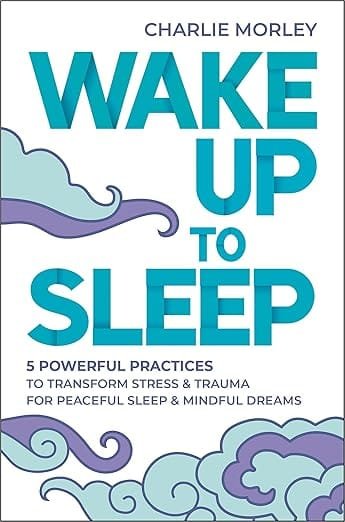Understanding Sleepiness
Sleepiness is a natural physiological state characterized by a decreased capacity for alertness and activity, often resulting in a strong desire to sleep. It can manifest in various ways, including difficulty concentrating, reduced productivity, and increased fatigue. While experiencing sleepiness occasionally is a normal aspect of life, distinguishing between regular tiredness and excessive sleepiness is crucial for maintaining optimal health and functioning.
Normal tiredness generally results from activities that require physical or mental exertion and is typically resolved with adequate rest. In contrast, excessive sleepiness indicates an underlying issue that may persist even after sufficient sleep. This condition can stem from several factors, including poor sleep quality, stress, diet, and specific medical conditions. For instance, individuals who suffer from chronic sleep disorders, such as sleep apnea or insomnia, often experience excessive sleepiness during waking hours, impacting daily activities and overall well-being.
The body’s circadian rhythms also play a significant role in regulating alertness. These internal biological clocks influence sleep patterns, hormonal releases, and body temperature, contributing to periods of wakefulness and sleepiness over a 24-hour cycle. Disruptions to these rhythms, whether through shift work, irregular sleep schedules, or lifestyle choices, can lead to increased sleepiness and diminished cognitive performance. Additionally, external factors like stress and an imbalanced diet can exacerbate the influences of circadian rhythms, further amplifying feelings of sleepiness.
Ultimately, understanding sleepiness involves recognizing the distinctions between normal tiredness and excessive sleepiness, as well as the various factors that contribute to this state. Addressing these underlying issues and maintaining proper sleep hygiene can assist individuals in combating excessive sleepiness and enhancing overall vitality and alertness.
The Importance of Sleep Hygiene
Sleep hygiene encompasses a variety of practices designed to establish and maintain optimal sleep quality. Creating an environment conducive to restful sleep is paramount, as it directly influences one’s ability to stay alert during waking hours. A consistent sleep schedule plays a critical role in promoting good sleep hygiene. Going to bed and waking up at the same time each day helps regulate the body’s internal clock, ultimately facilitating deeper and more restorative sleep.
Furthermore, the creation of a comfortable sleep environment cannot be overlooked. This includes factors such as room temperature, noise levels, and light exposure. A cool, dark, and quiet atmosphere can significantly enhance one’s ability to fall asleep and maintain quality sleep throughout the night. Employing blackout curtains, using earplugs, or adjusting the thermostat can be effective strategies to create this ideal setting.
Another important aspect of sleep hygiene involves the careful selection of activities and substances before bedtime. Avoiding stimulants, such as caffeine or nicotine, in the hours leading up to sleep can lead to better sleep quality. Engaging in calming pre-sleep routines, such as reading or practicing relaxation techniques, can signal to the brain that it is time to wind down. This practice not only enhances the ability to fall asleep but also reduces the likelihood of waking during the night.
The link between good sleep hygiene and reduced daytime sleepiness is well-supported by research. Individuals who prioritize these habits typically report higher energy levels and improved cognitive function throughout the day. Therefore, by integrating effective sleep hygiene practices, one can significantly mitigate feelings of sleepiness and enhance overall well-being.
Nutrition’s Role in Alertness
The impact of nutrition on energy levels and sleepiness is profound and multifaceted. A well-balanced diet plays a pivotal role in maintaining alertness throughout the day. Consuming meals that are rich in essential nutrients can help combat fatigue and promote a sustained sense of vitality. A balanced meal typically includes a combination of proteins, healthy fats, and complex carbohydrates, which together provide a steady release of energy.
Proteins are crucial for producing neurotransmitters that regulate sleep-wake cycles, making them an essential component in the fight against sleepiness. Foods rich in lean protein, such as chicken, fish, eggs, and legumes, can help in maintaining focus and alertness. Additionally, incorporating healthy fats, such as those found in avocados, nuts, and olive oil, contributes to prolonged energy and can enhance brain function, thereby reducing the risk of fatigue.
Hydration is another key factor in maintaining alertness. Dehydration can lead to a significant decrease in cognitive performance and increased feelings of tiredness. It is recommended to drink ample water throughout the day to ensure the body remains hydrated and functions optimally.
On the contrary, certain foods should be avoided as they can exacerbate tiredness and lethargy. Sugar-laden snacks and beverages, while providing a quick energy boost, often result in a crash that leaves a person feeling even more tired than before. Additionally, heavily processed foods can drain energy levels and contribute to an overall sense of sluggishness.
In essence, choosing nutrient-dense foods, staying hydrated, and avoiding high-sugar items can significantly mitigate sleepiness and promote alertness, leading to a more productive day. By prioritizing a balanced diet, individuals can achieve a greater level of energy and alertness throughout their daily activities.
Sleepon is the ultimate game-changer in the world of sleep management!
Effective Break Techniques for Boosting Alertness
In today’s fast-paced environment, maintaining alertness throughout the day can become a challenge. One effective way to combat feelings of sleepiness is by implementing strategic break techniques. These methods not only help rejuvenate the mind but also enhance overall productivity. One popular approach is the Pomodoro Technique, which involves working for 25 minutes followed by a 5-minute break. This cycle is repeated several times, allowing individuals to rest their minds and re-energize before resuming work. The structured intervals assist in maintaining focus and mitigating fatigue, making it easier to tackle prolonged tasks.
In addition to the Pomodoro Technique, incorporating simple stretching exercises during breaks can significantly boost alertness. Brief stretches help to alleviate muscle tension that often arises from prolonged periods of sitting. Engaging in stretching routines not only enhances circulation but also increases oxygen flow to the brain, which can improve cognitive function and fight off drowsiness. A few minutes of stretching can have profound effects, enhancing both physical well-being and mental clarity.
Furthermore, integrating short bursts of physical activity into breaks can also serve as an effective strategy. Activities such as brisk walking, jumping jacks, or even a few minutes of dancing can elevate heart rates and stimulate endorphin release, pumping up energy levels. Physical engagement can shift focus away from work-related fatigue, providing a significant mood boost that fosters alertness and concentration upon return to tasks.
Regular breaks prove critical in maintaining energy levels and focus throughout the day. By utilizing techniques like the Pomodoro Technique, stretching, and brief physical activities, individuals not only counteract sleepiness but also enhance their overall productivity and well-being. Making these break strategies a habit can cultivate a more engaged and robust work ethic.
Physical Activity and Its Benefits
Engaging in regular physical activity plays a pivotal role in enhancing energy levels and combating feelings of sleepiness. Exercise promotes the release of endorphins, often referred to as “feel-good” hormones, which can lead to an increased sense of well-being and heightened alertness. When the body is active, these endorphins reduce fatigue and promote a more energetic state, thereby counteracting the lethargy that often accompanies prolonged periods of sitting or inactivity.
A variety of physical activities can be particularly effective at revitalizing energy levels. Aerobic exercises, such as jogging, cycling, or swimming, are particularly beneficial in this regard, as they elevate the heart rate and stimulate circulation. This improved blood flow not only energizes the muscles but also enhances oxygen delivery to the brain, which is crucial for maintaining cognitive function and focus. Furthermore, incorporating strength training exercises, such as weight lifting or resistance workouts, adds an element of muscle engagement that contributes to overall energy levels throughout the day.
Short bursts of activity are especially useful for combating sleepiness, particularly during the common afternoon lull. A quick 5 to 10-minute walk, a few jumping jacks, or even some stretching exercises can provide immediate boosts in energy. These brief activity intervals help regulate circadian rhythms and break the cycle of drowsiness, making it easier to refocus on the tasks at hand. Scientific studies have demonstrated that physical movement not only invigorates the body but also has beneficial effects on mood and stress levels, which collectively enhance productivity and alertness.
Incorporating regular physical activity into one’s daily routine can lead to significant improvements in energy management. By understanding its benefits, individuals can harness the power of exercise to fend off sleepiness efficiently and embrace a more alert lifestyle.
Sleepon – Blue Light Blocking Glasses
Sleepon Blue Light Blocking Glasses are designed for the modern lifestyle, providing essential protection against harmful blue light emitted by screens. These stylish glasses help reduce eye strain, improve sleep quality, and enhance overall visual comfort.
Mindfulness and Mental Exercises
Mindfulness and mental exercises play a pivotal role in combating sleepiness and enhancing focus. Integrating these practices into daily routines can significantly reduce feelings of drowsiness and improve overall cognitive function. One popular method for achieving mindfulness is meditation, which involves focusing one’s attention and eliminating distractions. Regular meditation sessions can lead to heightened awareness and better control over one’s thoughts, ultimately resulting in increased alertness.
Deep breathing exercises are another effective strategy. Engaging in controlled breathing techniques, such as diaphragmatic breathing, can increase oxygen flow to the brain, thereby revitalizing mental performance. By taking a moment to step back and concentrate on each breath, individuals can experience reduced stress levels and a clearer mind, making it easier to stay awake and attentive.
Cognitive games also serve as an excellent way to invigorate the mind. Engaging in puzzles, memory games, or problem-solving activities stimulates mental faculties and promotes cognitive engagement, countering the lethargy that often accompanies sleepiness. Incorporating short sessions of these activities into one’s day can lead to improved concentration and enhanced productivity.
Additionally, mindfulness can be extended to physical activities like yoga or tai chi, which not only promote relaxation but also encourage mental clarity. Such exercises involve synchronized breathing and movements that help maintain focus while alleviating tension in the body. The combination of movement and mental engagement nurtures a refreshed state of mind, making it easier to stay alert.
In sum, incorporating mindfulness and mental exercises into one’s daily life greatly enhances the ability to counteract sleepiness. By embracing practices such as meditation, deep breathing, and cognitive challenges, individuals can effectively recharge their mental reserves and maintain optimal alertness throughout the day.
The Impact of Caffeine and Other Stimulants
Caffeine, one of the most widely consumed stimulants globally, significantly impacts alertness and cognitive function. Found predominantly in coffee, tea, energy drinks, and certain soft drinks, caffeine operates by blocking adenosine receptors in the brain, thereby reducing feelings of fatigue and promoting wakefulness. The average cup of coffee contains approximately 95 milligrams of caffeine, while teas typically range from 20 to 60 milligrams. Energy drinks can vary widely, often exceeding 100 milligrams per serving.
While caffeine plays a crucial role in enhancing vigilance and concentration, it is essential to understand its effects on the body. On one hand, moderate caffeine consumption can improve mental performance and reaction times, making it an effective tool for combating sleepiness. On the other hand, over-reliance on caffeine can lead to tolerance, necessitating higher doses to achieve the same effects, which can result in cycles of fatigue and heightened dependency. Moreover, excessive caffeine intake may lead to side effects such as increased heart rate, restlessness, and anxiety.
Other common stimulants, such as nicotine found in tobacco products, also offer temporary boosts in alertness. However, similar to caffeine, these come with significant health risks and addictive properties. Additionally, herbal stimulants like guarana and yerba mate are gaining popularity as natural alternatives, containing varying amounts of caffeine and other compounds that may aid in reducing drowsiness.
For those considering using caffeine and other stimulants, timing is crucial. Consuming these substances too late in the day can severely disrupt sleep patterns, leading to a counterproductive cycle of drowsiness and dependency. As a guideline, limiting caffeine intake to the morning or early afternoon is advisable, allowing the body sufficient time to metabolize it before bedtime.
Wake Up to Sleep by Charlie Morley
Discover the secrets to restful sleep and vibrant dreams with ‘Wake Up to Sleep’ by Charlie Morley. This insightful guide blends mindfulness techniques with dreamwork practices to help you conquer insomnia and enhance your nightly rest.
Utilizing Light Exposure to Combat Sleepiness
The relationship between light exposure and alertness is well-documented, showcasing the significant impact that natural sunlight and artificial lighting can have on our energy levels and sleep patterns. Exposure to sunlight, particularly during the morning hours, plays a crucial role in regulating our circadian rhythms. This natural exposure helps to signal to the body that it is time to be awake, promoting alertness and improving overall mood. For individuals struggling with sleepiness, especially in the early parts of the day, seeking out sunlight can be a potent strategy.
Incorporating light exposure into daily routines is quite advantageous. Spending time outdoors in natural light for at least 20-30 minutes in the morning can significantly enhance energy levels throughout the day. If direct sun exposure is limited due to weather or location, utilizing light therapy lamps designed to mimic natural sunlight can be an effective alternative. These lamps are particularly beneficial during the winter months or for people whose work environments lack adequate lighting.
However, it is equally important to manage light exposure later in the day. The growing prevalence of blue light from smartphones, computers, and other digital devices can interfere with melatonin production and disrupt sleep patterns. To combat this, it is advisable to limit screen time to at least one to two hours before bedtime. When using electronic devices in the evening, consider employing blue light-blocking glasses or enabling built-in features that reduce blue light emissions. This practice can help prepare the body for sleep, fostering a better nighttime environment conducive to restfulness and alertness the following day.
In conclusion, effectively utilizing light exposure by increasing natural sunlight intake during the day and minimizing blue light exposure at night can greatly contribute to combating sleepiness. Adopting these strategies not only enhances daily alertness but also supports healthy sleep patterns.
Go2Sleep 3: The Ultimate Sleep Companion
The Go2Sleep 3 revolutionary home sleep monitor is designed to monitor and improve your sleep quality with its comfortable, widened ring holder and advanced algorithms for precise monitoring of blood oxygen, heart rate, and blood glucose.
When to Seek Professional Help
Experiencing excessive sleepiness regularly can significantly impact daily life, leading to decreased productivity and compromised health. While occasional tiredness is common, persistent sleepiness may suggest an underlying disorder that requires professional evaluation. Recognizing when to seek help is crucial for achieving better health outcomes and improving overall well-being.
One prominent condition associated with chronic sleepiness is sleep apnea, a disorder where breathing is repeatedly interrupted during sleep. Individuals with sleep apnea often experience loud snoring, gasping for air, and daytime fatigue. If you notice any of these symptoms alongside excessive daytime sleepiness, it is essential to consult a healthcare professional. A sleep study may be recommended to diagnose this condition accurately.
Another condition to consider is narcolepsy, a neurological disorder characterized by overwhelming daytime drowsiness and sudden sleep attacks. People with narcolepsy may also experience cataplexy, a sudden loss of muscle tone triggered by strong emotions. If you find yourself struggling to stay awake during the day or experiencing unusual sleep patterns, seeking the advice of a medical expert can provide clarity and proper management options.
In addition to these conditions, excessive sleepiness may indicate other underlying health issues, such as hypothyroidism, depression, or various chronic illnesses. These ailments can mask symptoms of sleep disorders, making it essential to communicate clearly with healthcare providers about your experiences.
Overall, if you are regularly battling persistent sleepiness and it interferes with your daily life, it is advisable to seek professional help. Engaging in a comprehensive assessment with a healthcare provider can help determine the cause of your sleepiness and guide you toward appropriate treatment options, ensuring a path to regaining control over your energy levels.
References:
- Medic, Goran, et al. “Short- and Long-Term Health Consequences of Sleep Disruption.” Nature and Science of Sleep, vol. 9, 2017, pp. 151–61.
- Worley, Susan L. “The Extraordinary Importance of Sleep”. The Extraordinary Importance of Sleep, 2018. NCBI.
- Chaput, Jean-Philippe, et al. “Sleeping Hours: What Is the Ideal Number and How Does Age Impact This?” Nature and Science of Sleep, vol. 10, 2018, pp. 421–30.
- ASA Authors & Reviewers: Sleep Physician at American Sleep Association. Reviewers and Writers Board-certified sleep M.D. physicians, scientists, editors, and writers for ASA. “What Is Sleep & Why Is It Important for Health?” American Sleep Association, 27 July 2021.
- “Sleep Tips: 6 Steps to Better Sleep.” Mayo Clinic, 17 Apr. 2020.
- Suni, Eric. “What Happens When You Sleep?” Sleep Foundation, 30 Oct. 2020.
- Mandal, Ananya, MD. “What Is Sleep?” News-Medical.Net, 30 Jan. 2020.
Body, Mind, And Soul For A Fulfilled Life!






